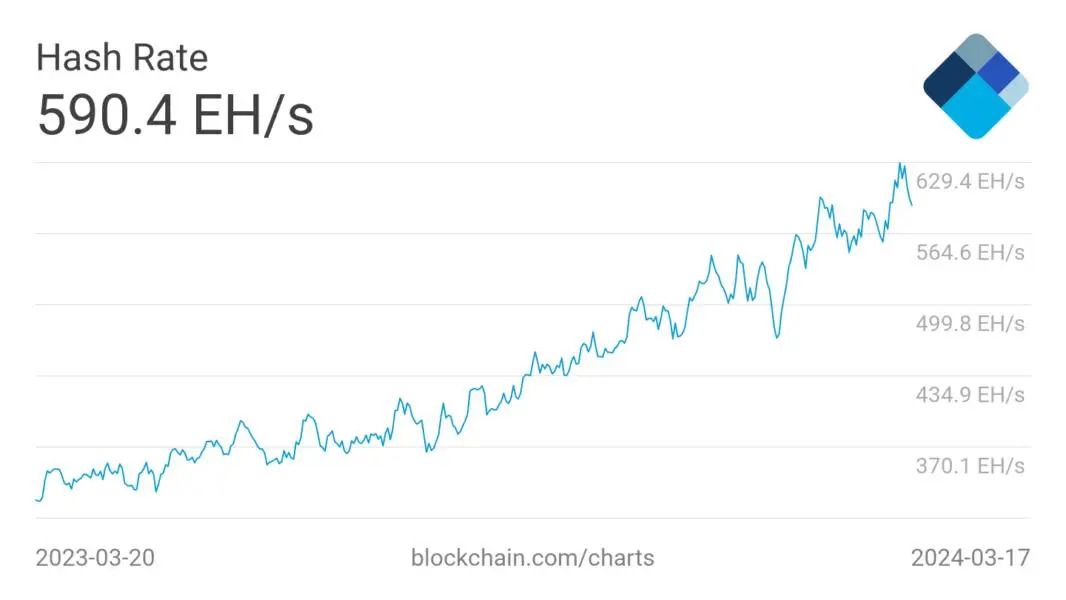- The upcoming Bitcoin halving poses a significant challenge for small and inefficient miners while offering a strategic advantage to well-established firms.
- Experts predict a consolidation in the mining sector, emphasizing the importance of operational efficiency and technological advancements.
- “Mining will likely become increasingly decentralized,” says Marathon Digital’s chief growth officer, highlighting the shift towards sustainable and cost-effective mining practices.
This article explores the implications of the forthcoming Bitcoin halving on the mining industry, including operational challenges, market consolidation, and the potential for price appreciation.
Halving Hurdles for Small Miners
$SDIG CEO Greg Beard recently joined @mattxmccoy's podcast to chat about the biggest misconception in the #Bitcoin mining industry – in under 60 seconds.
You heard Greg’s answer. What’s yours? pic.twitter.com/f1mFUlCuiE
— Stronghold Digital Mining (NASDAQ:SDIG) (@Stronghold_DM) February 21, 2024
The anticipated reduction in block rewards from the Bitcoin halving is expected to significantly impact the profitability of mining operations, especially for small and less efficient miners. Industry leaders suggest that the ability to scale operations and maintain operational efficiency will be paramount in the race for the dwindling rewards. Adam Swick from Marathon Digital, a leading North American mining firm, views the halving as a litmus test that will reveal the most efficient and well-capitalized players in the market.
Operational Efficiency Takes Center Stage
As the mining landscape braces for reduced block rewards, the emphasis on operational efficiency, balance sheet management, and capital structure becomes more pronounced. Michael Bennet of OceanBit points out that miners burdened with debt may find themselves forced to sell assets opportunistically to manage their financial obligations in the post-halving environment. This period is expected to heighten competition and underscore the importance of cost management and efficiency as key determinants of survival and success in the sector.
Consolidation and Technological Advancement
With the halving event on the horizon, a significant consolidation within the Bitcoin mining industry is anticipated. Experts predict that the need for profitability and operational efficiency will drive the development of advanced mining hardware and larger, more efficient operation sites. This shift is also expected to foster improved energy harvesting solutions, enabling miners to reduce costs and enhance sustainability. The trend towards decentralization in mining seeks to leverage unique energy assets, benefiting both miners and energy producers.
Implications for Bitcoin’s Price and Market Dynamics
The reduction in Bitcoin’s daily issuance from 900 to 450 BTC post-halving, coupled with sustained or increasing global demand, is poised to drive further growth in Bitcoin’s price. The recent approval of Bitcoin exchange-traded funds (ETFs) in the U.S. has already contributed to a surge in demand, with major players like BlackRock and Fidelity significantly increasing their Bitcoin holdings. This increase in institutional interest, alongside the halving’s supply constraint, supports a bullish outlook for Bitcoin’s market valuation.
Conclusion
The Bitcoin halving represents a pivotal moment for the mining industry, testing the resilience and adaptability of miners. While it poses challenges, particularly for smaller and less efficient operations, it also offers opportunities for innovation and market growth. The anticipated consolidation could streamline the sector, paving the way for a more sustainable and efficient mining ecosystem. Furthermore, the halving’s impact on Bitcoin’s supply and demand dynamics could catalyze further price appreciation, reinforcing Bitcoin’s position as a leading digital asset.








